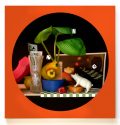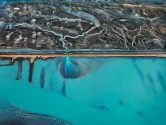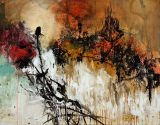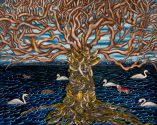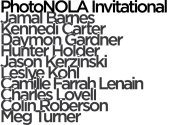Kate Blacklock
Kate Blacklock’s medium-scale works on metal present choreographed tableaus reminiscent of Dutch Vanitas paintings in one series and nightscapes, recalling Japanese screen paintings, in the other. The compositions, which are created using a flatbed scanner as a camera, are captured on dye infused aluminum. They are described by the artist as existing in an ambiguous space, not subject to the laws of gravity. Each of the works conjures an enigmatic moment frozen in time. Read More

